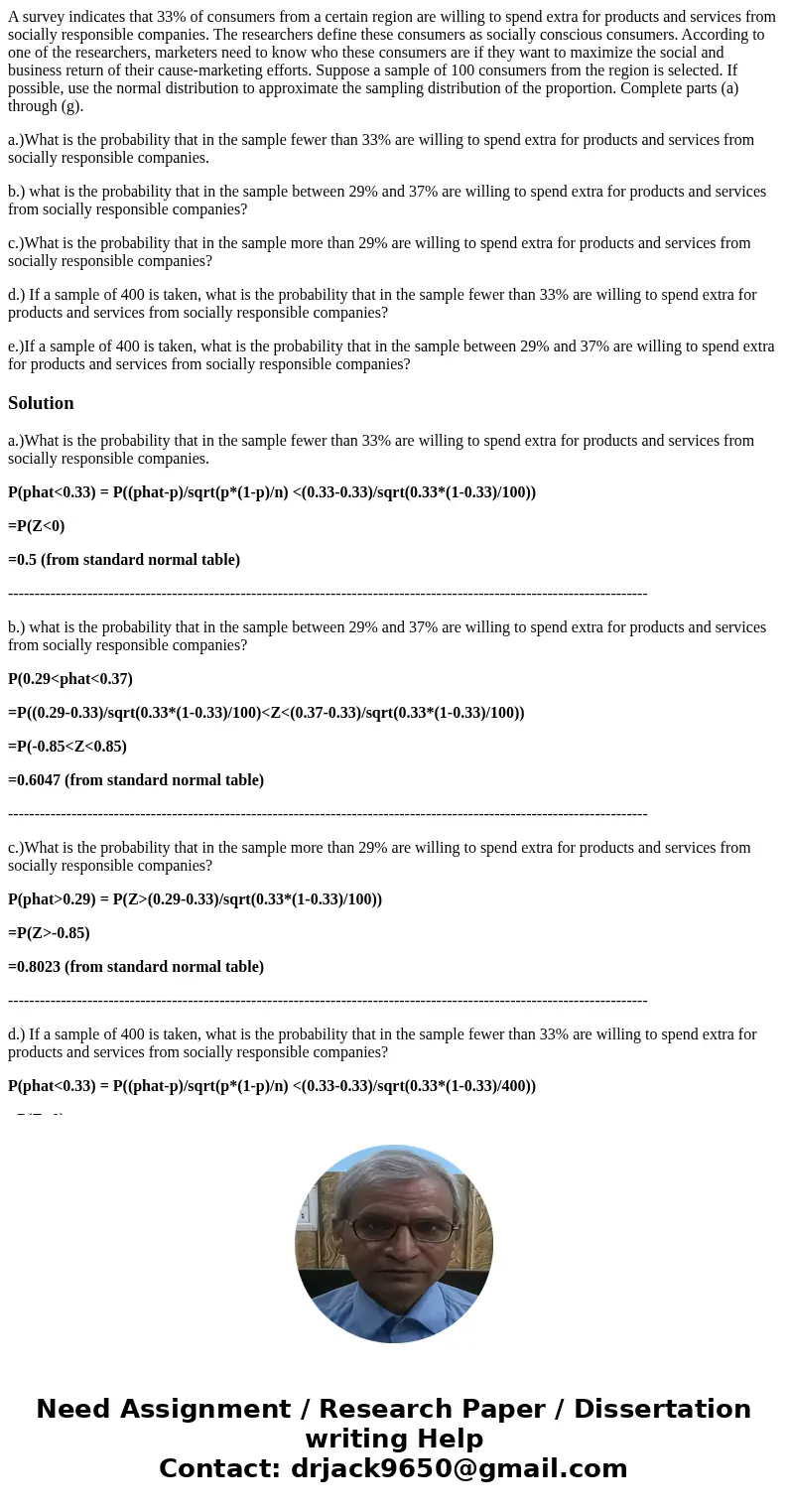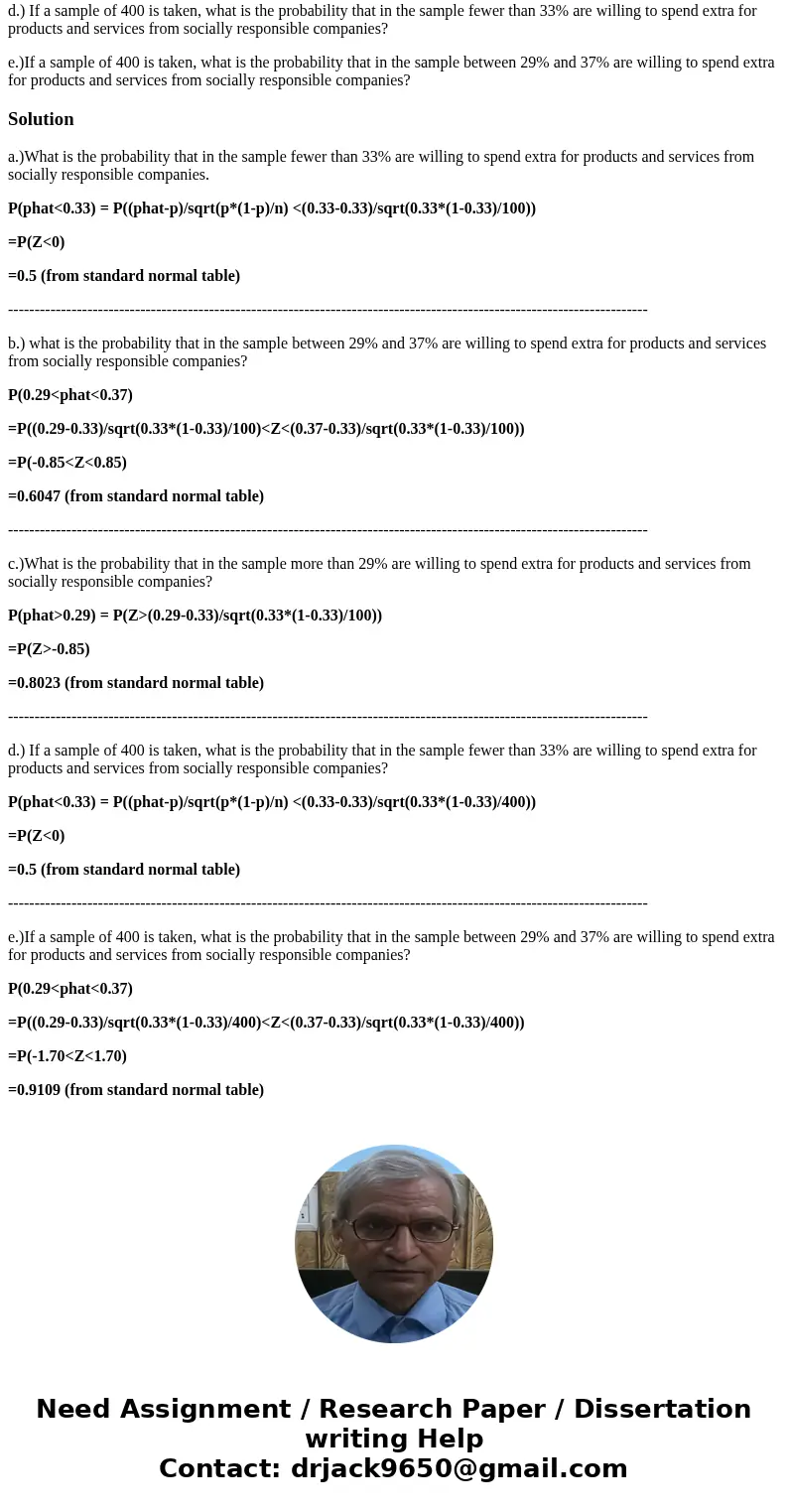A survey indicates that 33 of consumers from a certain regio
A survey indicates that 33% of consumers from a certain region are willing to spend extra for products and services from socially responsible companies. The researchers define these consumers as socially conscious consumers. According to one of the researchers, marketers need to know who these consumers are if they want to maximize the social and business return of their cause-marketing efforts. Suppose a sample of 100 consumers from the region is selected. If possible, use the normal distribution to approximate the sampling distribution of the proportion. Complete parts (a) through (g).
a.)What is the probability that in the sample fewer than 33% are willing to spend extra for products and services from socially responsible companies.
b.) what is the probability that in the sample between 29% and 37% are willing to spend extra for products and services from socially responsible companies?
c.)What is the probability that in the sample more than 29% are willing to spend extra for products and services from socially responsible companies?
d.) If a sample of 400 is taken, what is the probability that in the sample fewer than 33% are willing to spend extra for products and services from socially responsible companies?
e.)If a sample of 400 is taken, what is the probability that in the sample between 29% and 37% are willing to spend extra for products and services from socially responsible companies?
Solution
a.)What is the probability that in the sample fewer than 33% are willing to spend extra for products and services from socially responsible companies.
P(phat<0.33) = P((phat-p)/sqrt(p*(1-p)/n) <(0.33-0.33)/sqrt(0.33*(1-0.33)/100))
=P(Z<0)
=0.5 (from standard normal table)
-------------------------------------------------------------------------------------------------------------------------
b.) what is the probability that in the sample between 29% and 37% are willing to spend extra for products and services from socially responsible companies?
P(0.29<phat<0.37)
=P((0.29-0.33)/sqrt(0.33*(1-0.33)/100)<Z<(0.37-0.33)/sqrt(0.33*(1-0.33)/100))
=P(-0.85<Z<0.85)
=0.6047 (from standard normal table)
-------------------------------------------------------------------------------------------------------------------------
c.)What is the probability that in the sample more than 29% are willing to spend extra for products and services from socially responsible companies?
P(phat>0.29) = P(Z>(0.29-0.33)/sqrt(0.33*(1-0.33)/100))
=P(Z>-0.85)
=0.8023 (from standard normal table)
-------------------------------------------------------------------------------------------------------------------------
d.) If a sample of 400 is taken, what is the probability that in the sample fewer than 33% are willing to spend extra for products and services from socially responsible companies?
P(phat<0.33) = P((phat-p)/sqrt(p*(1-p)/n) <(0.33-0.33)/sqrt(0.33*(1-0.33)/400))
=P(Z<0)
=0.5 (from standard normal table)
-------------------------------------------------------------------------------------------------------------------------
e.)If a sample of 400 is taken, what is the probability that in the sample between 29% and 37% are willing to spend extra for products and services from socially responsible companies?
P(0.29<phat<0.37)
=P((0.29-0.33)/sqrt(0.33*(1-0.33)/400)<Z<(0.37-0.33)/sqrt(0.33*(1-0.33)/400))
=P(-1.70<Z<1.70)
=0.9109 (from standard normal table)


 Homework Sourse
Homework Sourse